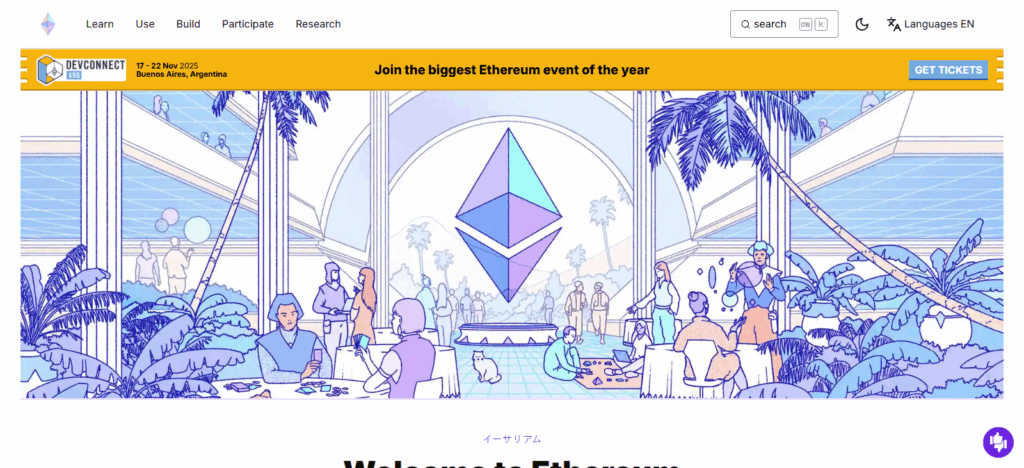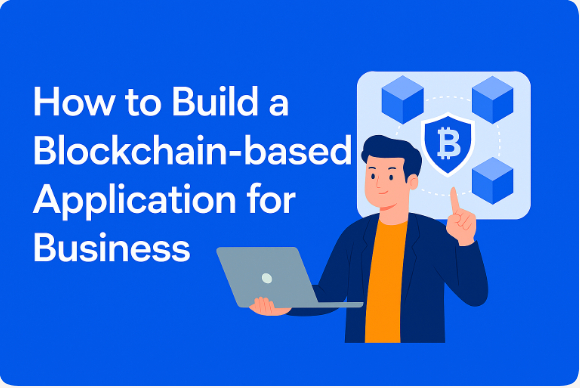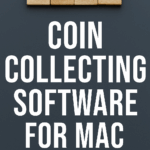How to Build a Blockchain-based Application for Business improves operation security, transparency, and efficiency. Unlike conventional applications, blockchain applications use decentralized networks and automate processes using smart contracts, which help eliminate intermediaries and provide irrefutable records.
Structuring the business’s approach to incorporating blockchain technology involves defining use cases, choosing appropriate platforms, formulating smart contracts, and adding easy-to-use interfaces. Such an organized strategy improves the development of innovative, dependable, and expandable digital solutions.
What is a Blockchain App?
Decentralized applications (DApps) are a class of applications built on the blockchain and are quite different from regular applications. Unlike conventional applications which are built on a centralized system that has a single point of failure, DApps are built on a decentralized system.
DApps do not rely on centralized servers that run the backend code. Instead, they perform transactions and processing of data on a peer-to-peer (P2P) network, achieving secure data processing.
To users, DApps perform the same functions and services as regular applications, and offer the additional advantages of transparency, security, and decentralization granted by blockchain technology.
How to Build a Blockchain-based Application for Business?
Step 1 — Define the Problem & App Purpose
- Identify the industry use case. Associate the app with a specific need (e.g. supply-chain provenance, cross-border micropayments, DeFi liquidity services, NFT ownership and royalties).
- Decide if blockchain fits. Use blockchain when you need decentralization, immutability, auditable transparency, programmable automation (smart contracts), and trust from multiple parties. If your need is straightforward data storage, and simple CRUD operations, then blockchain is not the best fit.
- Deliverable: Short one-page use-case statement with success metrics (what will change if the app succeeds).
Step 2 – Choose the Type of Blockchain
| Type | Use Cases | Example Platforms |
|---|---|---|
| Public Blockchain | Open, permissionless apps | Ethereum, Solana |
| Private Blockchain | Enterprise data management | Hyperledger Fabric |
| Consortium | Industry collaborations (e.g., banking) | R3 Corda |
Public blockchains offer decentralization but face scalability issues, while private/consortium networks prioritize speed and control.
Step 3 — Pick a blockchain platform
Match platform to needs: analyse transaction speed, fee model, developer tooling, privacy features, and ecosystem.

- Ethereum — strongest smart-contract ecosystem; can be expensive on gas.
- Polygon — Ethereum Layer-2 for lower fees and higher throughput.
- BNB Chain / Solana — high throughput suitable for gaming and some DeFi uses.
- Hyperledger Fabric — enterprise privacy and permissioning for supply chain and healthcare.
- Deliverable: platform comparison and final choice with tradeoffs documented.
Step 4 — Design the architecture & UX
- Smart contract logic: Establish on-chain workflows (token transfers, voting, access control), while ensuring minimal on-chain state.
- Frontend & UX: For onboarding potential non-crypto users, shift towards simple, non-technical flows (recommended React/Vue), while clearly displaying transaction status, fees, and signing requests.
- APIs & wallet integration: Determine the Web3.js or Ethers.js integration and supported wallets (MetaMask, WalletConnect) for the frontend.
- Deliverable: architecture diagram, UX wireframes, and API contract.
Step 5 — Develop smart contracts
- Languages & frameworks: For Ethereum use Solidity, for Solana Rust and Go/Java for some enterprise chains.
- Development tools: For quick prototypes use Remix while local testing and scripting can be done with Hardhat, Truffle or Foundry.
- Security practices: Schedule with reputable firms for formal audits (ex. CertiK or similar), follow best practices for security, write unit tests.
- Deliverable: contract source, tests, and security checklist.
Step 6 — Integrate frontend with smart contracts
- Client libraries: For contract calls and reading events use Ethers.js or Web3.js, and higher level stacks (Wagmi).
- Wallet flows: Create transaction signing flows (MetaMask, WalletConnect, hardware wallets) while providing graceful handling for pending/failed transactions.
- Deliverable: front-to-contract integration layer and sample transaction flows.
Step 7 — Conduct Extensive Testing
- Unit testing: include all scenarios and edge cases for every contract logic (reentrancy, access control). Tools: Truffle, Hardhat, Foundry.
- Testnets: deploy on public testnets (Goerli for Ethereum, Mumbai for Polygon) or on a private cluster to mimic production conditions, and run tests.
- User flow and UX testing: test onboarding and wallet setup, and the entire business flow.
- Deliverable: test reports, coverage metrics, and user acceptance test (UAT) notes.
Step 8 — Carry out the application deployment
- Mainnet / production deployment: deploy contracts to the selected chain using repeatable migration scripts. Use multisig for admin/deployer keys.
- Hosting: depending on requirements, host frontend on IPFS/Arweave for decentralized delivery or use traditional hosting (AWS, GCP).
- Monitoring & maintenance: set up on-chain and off-chain monitoring (transaction failures, gas usage, indexing lag). Use Tenderly or chain-specific explorers.
- Deliverable: deployment runbook, rollback plan, and monitoring dashboards.
How Does a Blockchain Application Work?
The working of a blockchain app entails logging transactions on a set of distributed nodes in a particular order. Every transaction goes through validation before it makes its way to an address on the blockchain. Consensus is achieved in a way that it becomes immutable. This creates unparalleled trust.
Unlike traditional applications which work on a centralised server, blockchain apps work on a decentralised network which effectively removes particular failure points. This is one of the reasons blockchain technology is highly regarded in the field of cybersecurity. Automatic smart contracts provide self executing agreements which move business processes to effectively remove trust bottlenecks.
Businesses developing blockchain applications can control all processes, without reliance on external entities for trust consolidation.
Types of Blockchains (Rewritten Explanation)
Consortium Blockchains
These blockchains are governed by a group of organizations. Each of the groups has the same amount of participation, which allows for trust and collaboration on multiple fronts, such as in banking or supply chain.
Public Blockchains
These are open network systems that anyone can access. Anyone can read, write, and take part in reaching a consensus. Examples are Bitcoin and Ethereum which uphold complete decentralization and transparency.
Private Blockchains
These are closed networks and are controlled by a single organization. They are best suited for internal enterprise operations that need privacy and efficiency, since access and permissions are limited to selected members.
Hybrid Blockchains
Hybrid blockchains are a mix of public and private systems. They provide controlled access with selective transparency** allowing organizations to keep private sensitive data while the rest can be made public.
Key Benefits of Build a Blockchain-based Application for Business
Security
Due to the use of cryptographic algorithms and the decentralized storage of information, blockchain is very difficult to alter, hack, or gain unauthorized access. Every transaction is agreed upon, preserving the integrity of the information and diminishing fraudulent activity.
Transparency
All members of a blockchain network share access to the same immutable ledger, fostering confidence and accountability. Each transaction is logged in order to provide a complete record and is publicly available, thus decreasing possible conflicts in business.
Efficiency
With the use of smart contracts, blockchain technology automates a variety of tasks, thus removing the need for middlemen and manual reconciliation. This advancement improves the speed and accuracy of operations in sectors like finance, logistics, and insurance.
Cost Reduction
Significant reductions in transaction fees and administrative expenses are possible due to the elimination of third-party middlemen and the automation of processes. Companies decreasing their dependence on legacy systems and gaining operational scalability offer data compliance, auditing, and verification cost savings.
Trust
Trust among participants is built by constant verification and validation of data and its unchanging nature. For users of decentralized systems, proof is cryptographic, and there is no need for an institution’s reputation. This is most valuable for peer-to-peer transactions and cooperative ecosystems.
Traceability
With blockchain, it is possible to see and manage an asset’s entire movement, which is critical in supply chain management. Businesses can see where products come from, how they move, and how ownership of them changes hands. This information is crucial in counterfeiting, quality control, and regulatory compliance.
Immutability
Immutability refers to data recorded on the blockchain being unchangeable and unremovable. This feature ensures permanent data audit trails and upholds compliance to regulations and laws while protecting records from data being manipulated. This is invaluable to industries sensitive about recordkeeping.
Decentralization
Decentralization is where control is partitioned to numerous nodes rather than a solitary authority. This minimizes single failure points, which increases the resilience of a system, while users in peer-to-peer networks gain greater control over their data and transactions.
Global Accessibility
By removing the need for traditional banking systems, blockchain allows for borderless transactions and exchanges of digital assets. This means businesses can offer cross-border payments and access global markets, onboarding users in poorly financial integrated areas with little friction.
Programmability
With the advent of smart contracts, developers can now embed business logic directly onto a blockchain. These self-executing contracts automatically trigger actions when defined conditions are satisfied. This functionality allows intricate workflows and the creation of decentralized applications (dApps) and disruptive new business models across different industries.
Challenges Businesses Face While Developing a Blockchain App
High Development Costs
Compared to a traditional application, developing a blockchain application requires setting up the appropriate infrastructure, conducting smart contract audits, and obtaining the specialized skills that will significantly increase the costs.
Lack of Skilled Developers
It is hard to find qualified developers because the field combines several highly specialized areas including cryptography, consensus algorithms and smart contracts.
Scalability Issues
Poor scalability of blockchains means the application will slow down and the user experience will suffer during times of heavy use because delays, high fees, and slow processing of transactions will frustrate users.
Complex Integration with Legacy Systems
It is hard to integrate blockchain technology with existing enterprise software like ERP and CRM systems, because such software has different data structure, and varying levels and methods of securing data, as well as different interoperability standards.
Regulatory and Compliance Uncertainty
Uncertain compliance will arise because the regulation of blockchains is inconsistent between countries, and there is vague legislation governing data privacy, digital assets, and smart contracts.
Security Vulnerabilities in Smart Contracts
Losing money is the outcome if smart contracts are exploited. Auditing the contracts and implementing best coding practices will ensure security, but such efforts are still very demanding and time-consuming.
User Adoption and Experience
Using a blockchain application can require a wallet setup, deal with transaction fees, and manage keys. For some non-technical users, onboarding might feel imposing without a smooth, user-centric interface.
Data Privacy Concerns
Blockchain technology permits businesses to be transparent and open, but exposes sensitive business information, or customer details, when stored and shared in a blockchain could be a privacy risk. Therefore, finding a middle ground remains complicated.
Interoperability Limitations
Blockchains are built on different protocols, and as a result, communicating with one another and exchanging information becomes a challenge. Firms trying to integrate their application may find connecting to several networks or third-party systems difficult.
Ongoing Maintenance and Upgrades
Maintenance, especially in patching or updating a blockchain system, is generally more difficult than with traditional apps and may require consensus across the network or system redeployment. If not appropriately executed, the costly and disorderly plan could cause service interruptions.
Conclusion
Constructing a business application on the blockchain needs methodical planning, technical accuracy, and a comprehensive understanding of the issue you’re looking to address.
Each step, from outlining your use case to selecting a blockchain type, building smart contracts, integrating secure APIs, and performing exhaustive testing, must ensure the system’s transparency, scalability and trustworthiness.
Correctly executed, blockchain applications can change the business processes, minimize expenses, improve the security of data, and boost customer confidence through decentralization.
The combination of innovative thinking with reliable development has the potential to offer businesses blockchain technology as a business differentiator to promote positivity in digital growth.
FAQ
What is a blockchain-based application (DApp)?
A blockchain-based application, or DApp, is an app built on a decentralized network. It uses smart contracts and distributed ledgers to ensure transparency, security, and trust without relying on a central authority.
How do I know if my business needs a blockchain app?
Blockchain is suitable when multiple parties require a shared, tamper-proof ledger, automation through smart contracts, or enhanced transparency. If your app only needs basic data storage, traditional databases may suffice.
Can blockchain apps integrate with existing business systems?
Yes, but integration requires careful planning. Use APIs and middleware to connect smart contracts with enterprise systems like ERP, CRM, or payment gateways while maintaining security and data integrity.
How long does it take to build a blockchain application?
An MVP typically takes 8–16 weeks, depending on complexity. Full production deployment, audits, integrations, and testing can take several months.









